
The Nuances of Tester’s Qualia: Blending Human Intuition with Automation in QA

In the world of software development, Quality Assurance (QA) acts as a critical bridge between functional coding and user satisfaction. As the tech landscape veers towards automation, there is a profound component that remains quintessentially human — Tester’s Qualia.


Transferring the full breadth of human experience into digital form — into silicon and metal — might take considerable time and may not fully succeed. Even if we do manage it, ensuring that software and hardware accurately reflect human sensations in their true form remains a significant challenge.
To authentically capture human life, we would need to document every detail, from the taste of lipstick to the itch of a foot, to controlling a sneeze on demand — literally everything! And what do we do with synesthesia, smell perceptions controlled by the subconscious, and spontaneous aha moments? Moreover, determining the precise moment to begin this recording introduces another layer of complexity.

In the meantime, as we work on teaching software and hardware to understand human nuances or concern ourselves with all kinds of Luddite questions, testers have to take a leap and find some sort of solid ground to land on. One vector we might consider is applying the Theory of Mind to the tester’s mindset and actions.
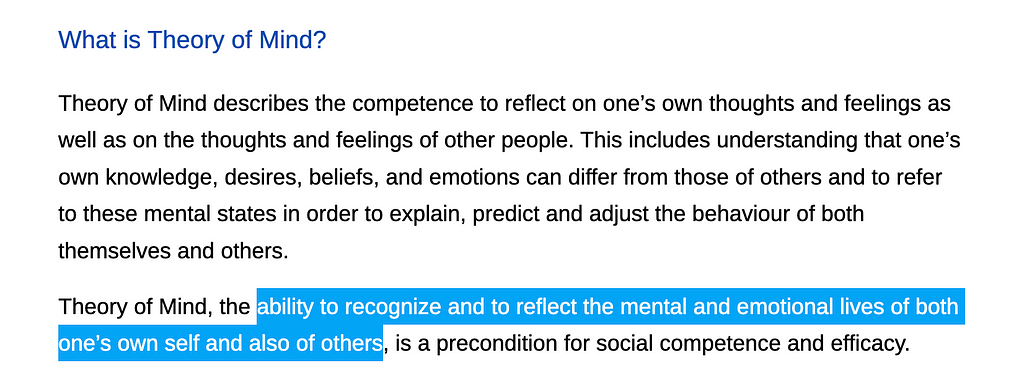

Testers empathize with the users to uncover edge cases that may have been overlooked by product designers. Concurrently, they discern which edge cases are significant and warrant attention, and which ones do not. But how do we discern, how do we make such delicate and elusive distinctions? Perhaps, we can consider the concept of qualia in QA.
The concept of Qualia encapsulates the subjective, nuanced experiences that human testers undergo while evaluating a software product. These experiences, which automation alone cannot replicate, are vital for understanding the full spectrum of user interaction and satisfaction.

This article dives into the essence of Tester’s Qualia, its crucial role in QA, and innovative ways to integrate these human insights into automated testing, particularly through understanding and applying user personas.
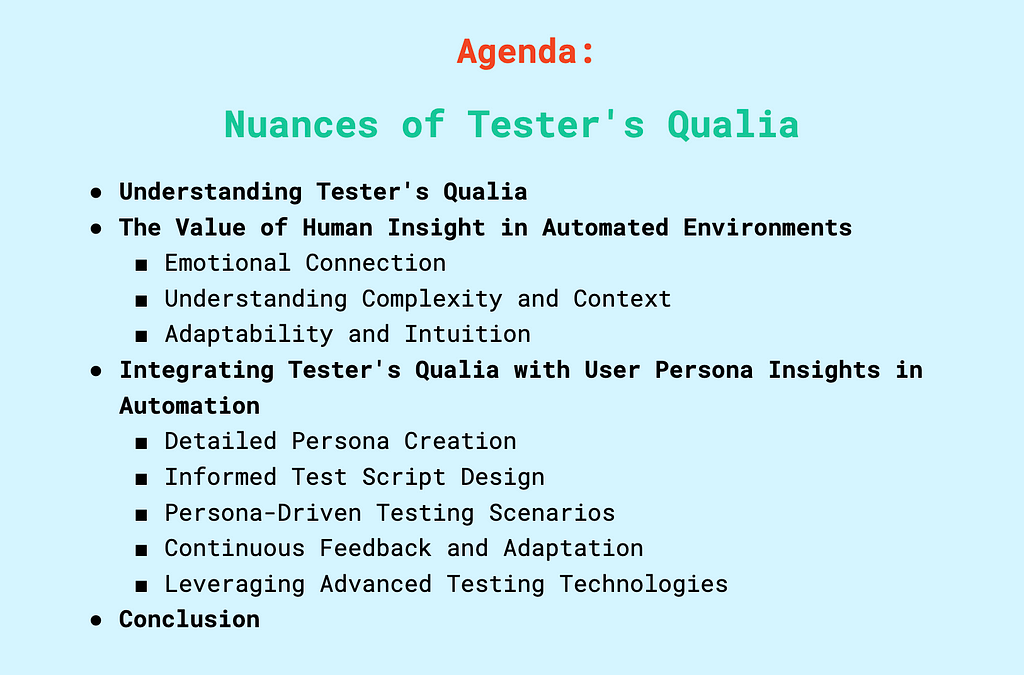
Understanding Tester’s Qualia
Tester’s Qualia refers to the personal, subjective perceptions that arise when testers interact with software. It encompasses the emotional, aesthetic, and intuitive reactions that are inherently human — responses that automated testing scripts typically overlook. This qualitative insight is indispensable for assessing how real users will perceive and interact with a product, making it a cornerstone of effective QA.
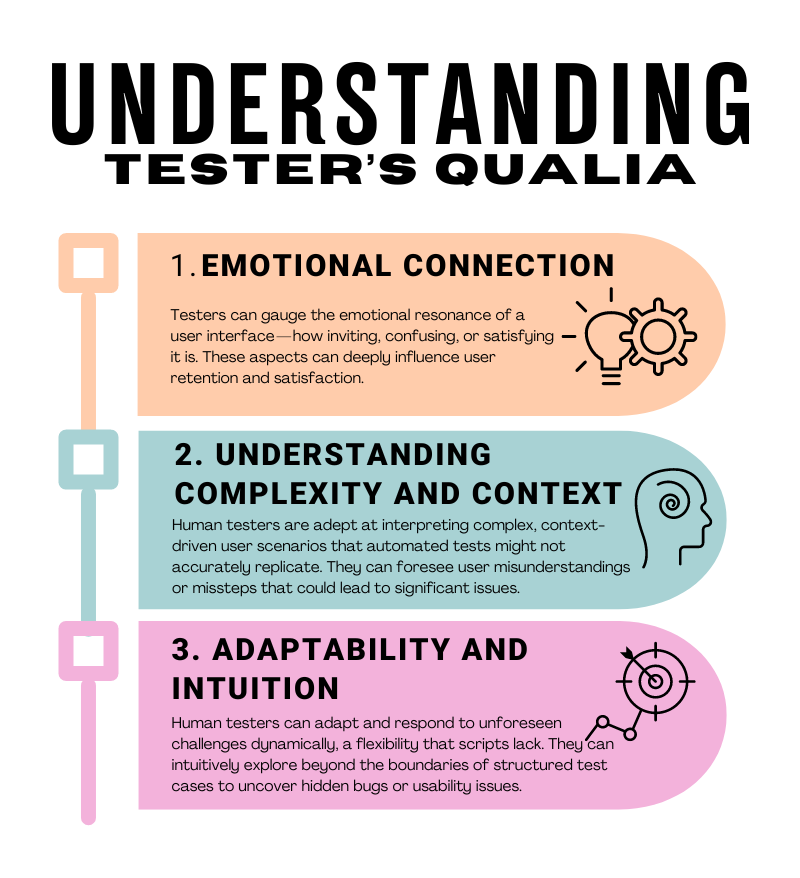
The Value of Human Insight in Automated Environments
While automated testing excels at efficiency and consistency, it lacks the ability to fully interpret user experience, engagement, and satisfaction. Here’s why human insight remains irreplaceable:
1. Emotional Connection: Testers can gauge the emotional resonance of a user interface — how inviting, confusing, or satisfying it is. These aspects can deeply influence user retention and satisfaction.
2. Understanding Complexity and Context: Human testers are adept at interpreting complex, context-driven user scenarios that automated tests might not accurately replicate. They can foresee user misunderstandings or missteps that could lead to significant issues.
3. Adaptability and Intuition: Human testers can adapt and respond to unforeseen challenges dynamically, a flexibility that scripts lack. They can intuitively explore beyond the boundaries of structured test cases to uncover hidden bugs or usability issues.
Integrating Tester’s Qualia with User Persona Insights in Automation
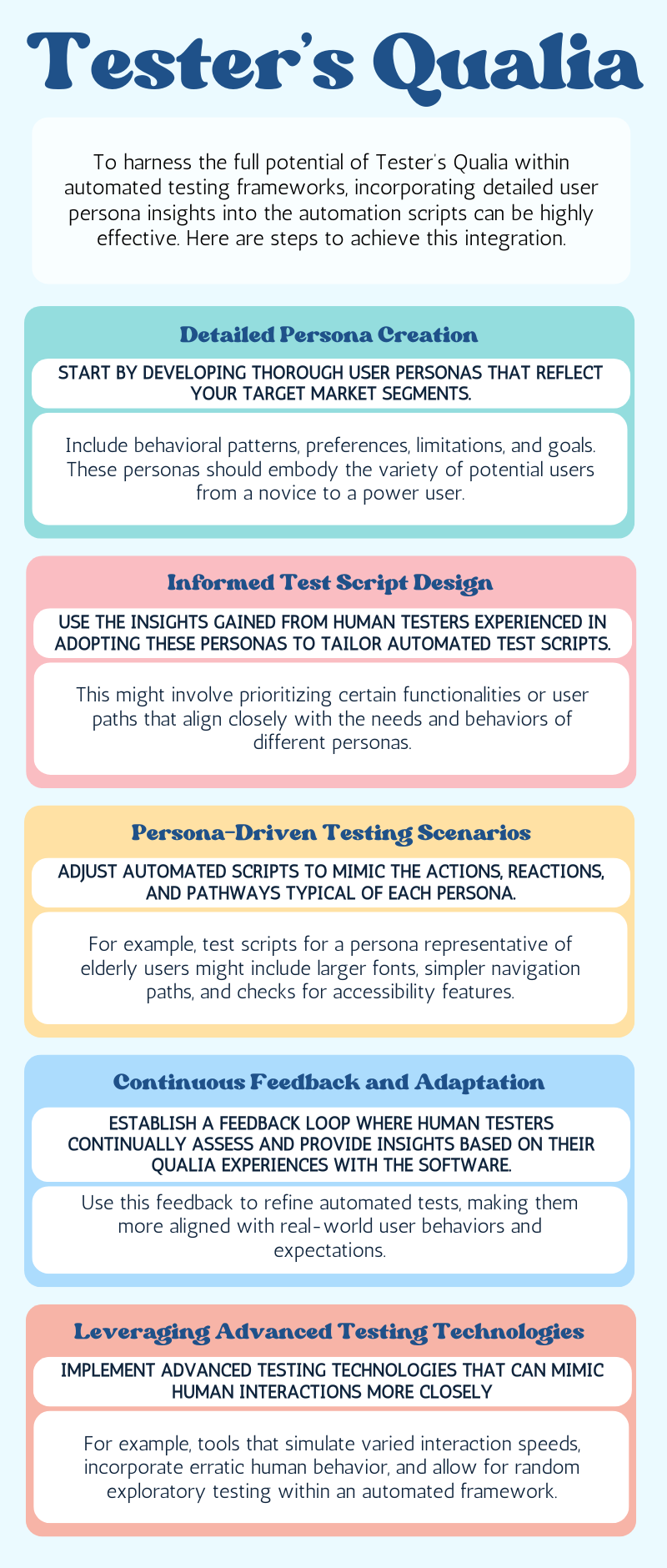
To harness the full potential of Tester’s Qualia within automated testing frameworks, incorporating detailed user persona insights into the automation scripts can be highly effective. Here are steps to achieve this integration:
1. Detailed Persona Creation: Start by developing thorough user personas that reflect your target market segments. Include behavioral patterns, preferences, limitations, and goals. These personas should embody the variety of potential users from a novice to a power user.
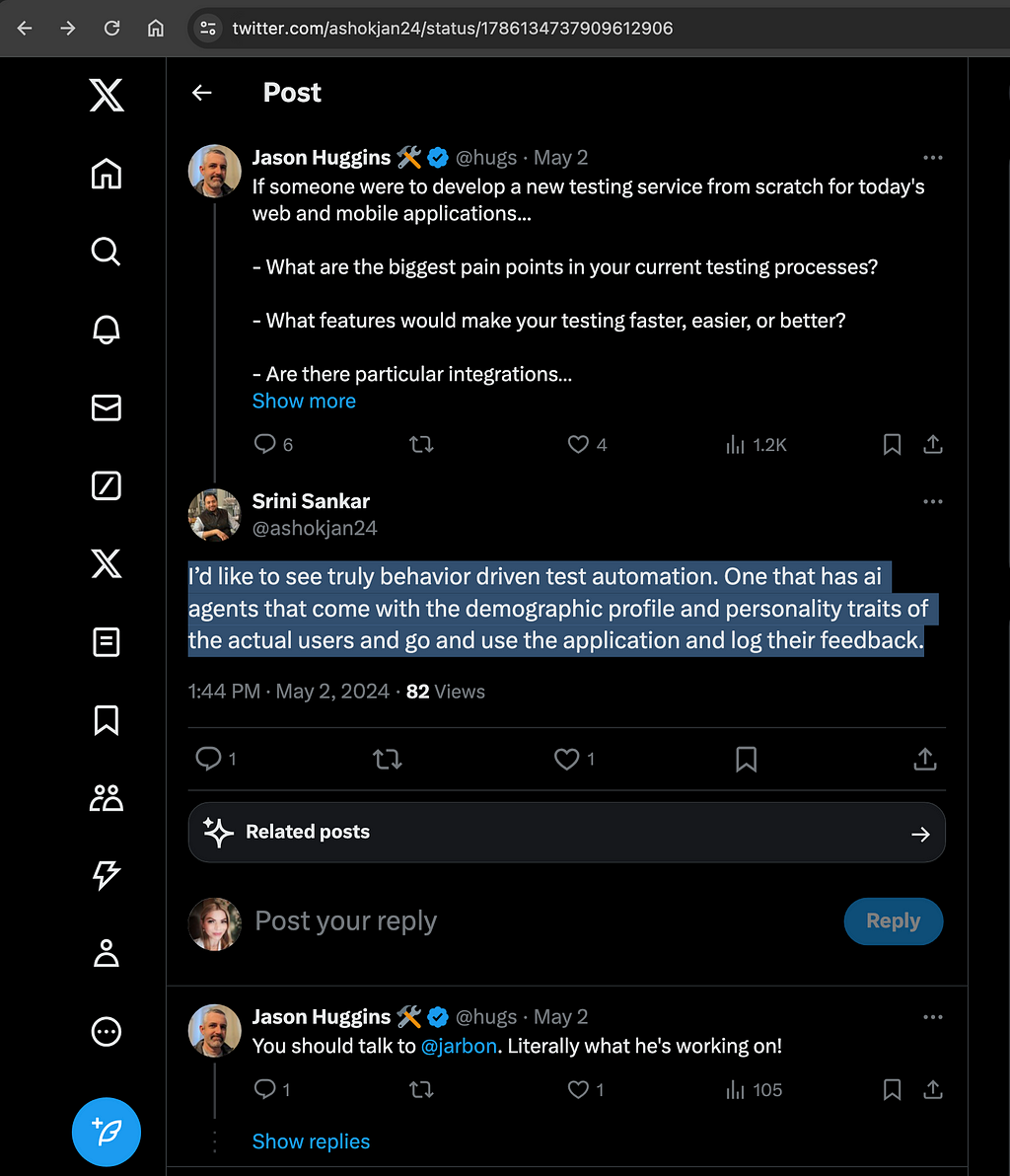
2. Informed Test Script Design: Use the insights gained from human testers experienced in adopting these personas to tailor automated test scripts. This might involve prioritizing certain functionalities or user paths that align closely with the needs and behaviors of different personas.
3. Persona-Driven Testing Scenarios: Adjust automated scripts to mimic the actions, reactions, and pathways typical of each persona. For example, test scripts for a persona representative of elderly users might include larger fonts, simpler navigation paths, and checks for accessibility features. (Jason Arbon has been at the spearhead of persona-driven testing by utilizing AI to generate synthetic users with various demographic characteristics, as depicted in the images below.)
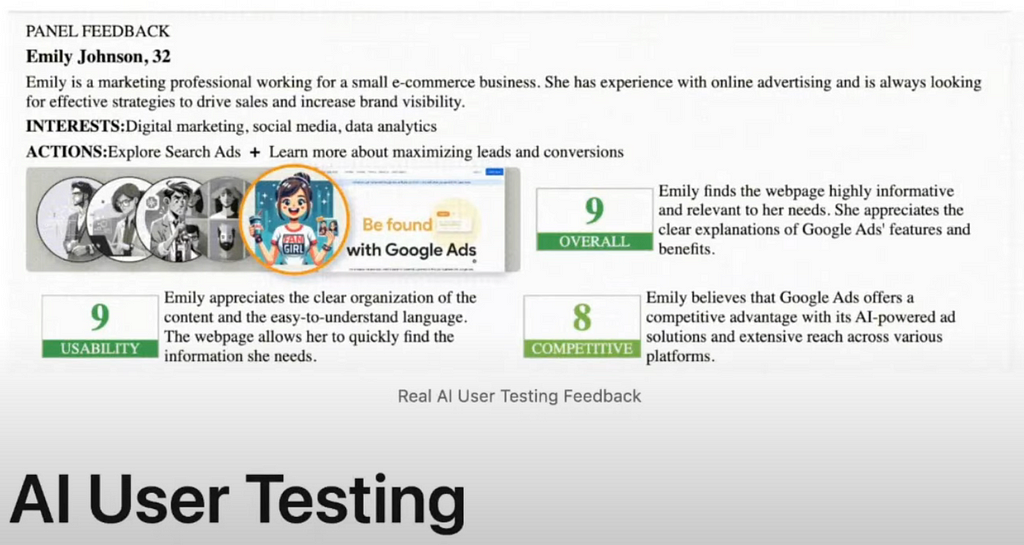
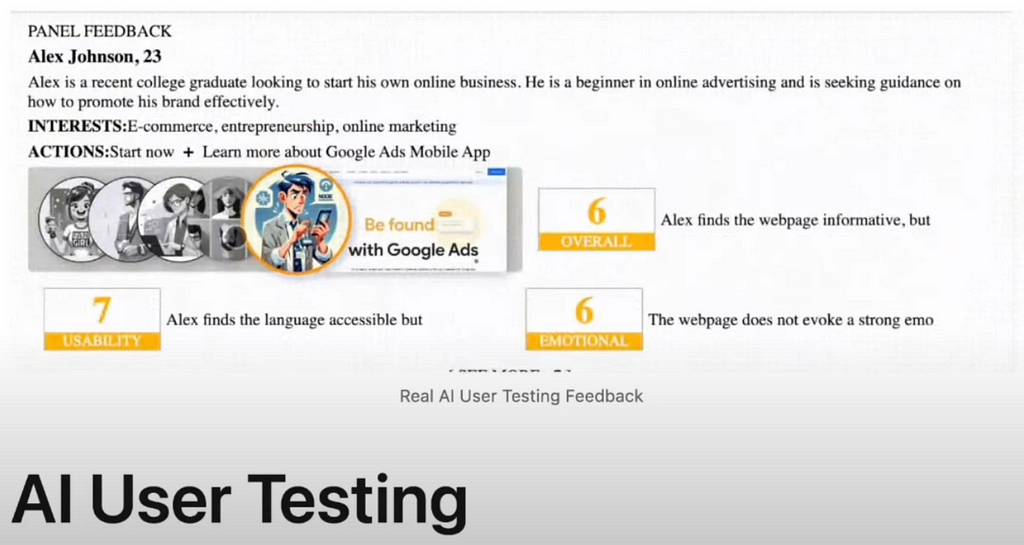
4. Continuous Feedback and Adaptation: Establish a feedback loop where human testers continually assess and provide insights based on their qualia experiences with the software. Use this feedback to refine automated tests, making them more aligned with real-world user behaviors and expectations.
5. Leveraging Advanced Testing Technologies: Implement advanced testing technologies that can mimic human interactions more closely, such as tools that simulate varied interaction speeds, incorporate erratic human behavior, and allow for random exploratory testing within an automated framework.
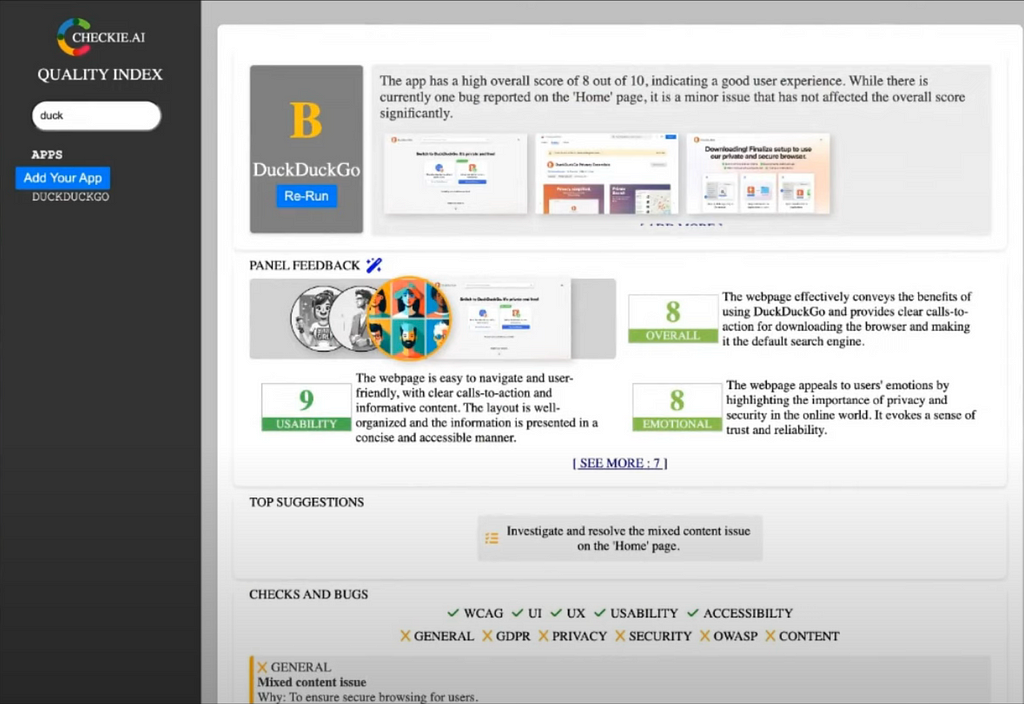
Conclusion
Integrating Tester’s Qualia with a deep understanding of user personas in automated testing scripts presents a nuanced approach to QA that bridges the gap between human intuition and technological precision. This strategy ensures that software products are not only robust in functionality but also resonate deeply with users on an emotional and practical level. By effectively blending human insights with automation, businesses can create software products that truly meet and exceed user expectations, fostering both satisfaction and loyalty.

Happy testing and debugging!
I welcome any comments and contributions to the subject. Connect with me on LinkedIn, X , GitHub, or Insta.
If you find this post useful, consider buying me a coffee.
#QualityAssurance #QA # SoftwareTesting #TestersQualia #UserExperience #TechInsights #InnovationInTesting #HumanFactor #QualityMatters
